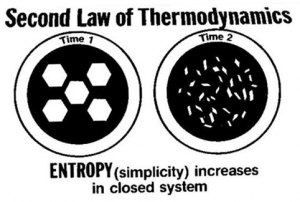Entropy in Humans, Opioid & Adenosine Receptors, & Neurological Responses—New Citations
Entropy Change in Human Physiological System
Researchers at the NASA Human Engineering laboratory recently took a thermodynamic approach to human physiology to make inferences about internal entropic changes in response to cognitive stress. This novel approach utilized Maxwell relations, which are equations derived through mathematical manipulation of thermodynamic variables, to use physiological measures to calculate a change in entropy. Subjects were asked to perform a series of cognitive tasks while blood pressure, heart rate, skin temperature, EMG and EDR were collected using a BIOPAC MP150 data acquistion system. It was shown in this experiment that entropy change did correlate directly to levels of psychophysiological stress as predicted, and you can read more about this study by downloading the paper here.
Cross-Talk between Opioid Receptors and Adenosine Receptors
Biomedical researchers in Korea have studied cross-talk between opioid receptors (OPR) and adenosine receptors (ADR) in response to preconditioning with remidentanil, a synthetic opioid commonly used in anesthesia, in isolated ischemic rat hearts. The purpose of preconditioning is that prior activation of OPR lessens the injury caused by cardiac reperfusion after ischemia, though not all is known about this mechanism. In the study, the researchers innovatively examined reperfusive injury in the preconditioned hearts treated with an ADR antagonist to indirectly observe activity of the OPR. BIOPAC equipment continuously measured LVP, HR and BP throughout the experiment. It was found that blocking of ADR activity had a negative effect on cardiac protection to I/R injury. This research suggests a functional role between the OPR and ADR in response to remidentanil preconditioning. You can download the entire paper here.
Mapping Neurological Responses with Anxiety-Associated Expectancy of Harm
Anxiety in fear conditioning research studies can be associated with an exaggerated expectancy of harm, including overestimation of how likely a conditioned stimulus (CS) predicts a harmful unconditioned stimulus (US). Researchers at USC studied whether this anxiety-associated expectancy of harm increases primary sensory cortex (S1) activity on non-shock CS trials in comparison with S1 activity in shock CS trials. Participants were conditioned to expect the shocks as they were accompanied by specific tones. Their aim was to determine whether the brain activity monitored during the anticipation of shock was associated with anxiety. Twenty participates completed a trace conditioning task while undergoing an fMRI, with shocks being delivered to the left hand. All physiological responses were recorded to a BIOPAC MP150 system with participants connected to MR-compatible electrodes. You can read about their findings by accessing the full paper here.
Stay Connected